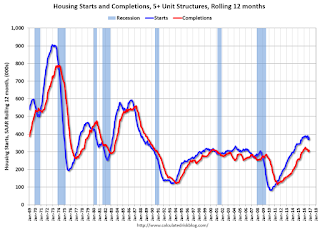Imagine dropping your kid off at college for the first time. It’s bound to be an emotional day for everyone—just ask any parent who has already done it.
Now imagine that same day, and add worrying about whether you can afford all the costs that come with higher education.
SEE ALSO: Kiplinger’s Best College Values
According to the College Board, in the 2015-16 school year, the average cost for tuition and fees at a public four-year college for an in-state student was $9,410. Room and board requires another $10,138. That makes your grand total $19,548 for just one year of college. For an out-of-state student, the cost goes up to $34,031. And that’s not even including books, electronic devices and all the extras young adults are bound to want.
Plus, consider that college costs have marched steadily higher over the past few decades. Back in 1985-86, tuition and fees at a public four-year college for an in-state student was just $2,918. In 1995-96, it was $4,399. And in 2005-06, it popped up to $6,708. So, barring any major disruption to this upward trend, you can expect your little one’s education to cost substantially more than the already high current averages.
Advertisement
Your imagined college drop-off day just got a lot more stressful, didn’t it?
You might be tempted to deal with this problem by putting it off, as so many of us constantly do with so many other things in life. After all, you have until Junior’s junior year of high school to worry about all this college stuff, right?
Wrong.
The longer you put off planning for college, the bigger a challenge it becomes. The smarter move is to start thinking about it all as soon as possible. The more time you give yourself to save for education, the better off you and your child will be.
Advertisement
Consider this: Let’s say you get a total of $5,000 in cash gifts at your baby shower. If you put all of that money into a college fund that earns an average return of 8% annually over the next 18 years, you’ll wind up with $19,980 without adding even one more penny yourself. That’s enough to cover a year of state school and then some. Don’t think an 8% return is a reasonable assumption? Even at 6% a year, your total comes to $14,272. Not chump change.
If you can add to your savings over time, all the better. Even if you can only afford to contribute a small amount each month, your efforts will add up over time. Starting with that $5,000, if you put in another $100 a month and earn 8% a year, you’ll reach $66,845 by the time your kid turns 18.
Obviously, the math says that the best time for you to start saving is right now. If you wait until your child is a sophomore in high school to start saving for college, it would be far more difficult for you to accumulate that much in such a short amount of time.
Not sure where you can start saving? A good financial adviser can help you analyze your cash flow and formulate a plan to achieve your goals. That includes identifying specific areas in your budget where you can reduce expenses. You can also develop a cost-effective debt repayment strategy, which can free up plenty of cash for additional saving.
Advertisement
That said, one word of warning: Do not forgo saving for your own retirement in order to save for your child’s education. It might sound like a heartless piece of advice, but, in this case, you have to put your own needs before those of your child’s. Remember, your kid does have the option to borrow in order to pay for college. It might not be the most desirable option, but it is an option. You won’t find any similar deals for financing your retirement.
Besides, think of it this way: By saving enough to support yourself through retirement, you ensure that your children aren’t forced to financially care for you after you run out of money.
Bottom line: You need to have an education funding review as soon as possible to help you through this financial challenge. By working with a good financial adviser on this goal, you can customize a smart plan to fit your own unique situation and ensure that you reach your goal—providing your child with the education he or she needs to succeed in the future.
Then, when the day comes for you to send your baby off into that next stage of life, you won’t have to worry about money at all. Instead, you’ll be able to focus on all the other things you’ll need to do that day, like say goodbye.
Advertisement
See Also: 529 Plan FAQs
Scott Vance is a fee-only financial planner and enrolled agent serving the greater Raleigh, N.C., area. He recently retired from the Army and seeks to continue service through financial advising.
Comments are suppressed in compliance with industry guidelines. Our authors value your feedback. To share your thoughts on this column directly with the author, click here.
This article was written by and presents the views of our contributing adviser, not the Kiplinger editorial staff.
Advertisement
Rate Info
He recommended Amazon in 1997 and Tesla in 2011. And he’s announcing his newest pick for the best stock to buy now.
5 Years From Now, You’ll Probably Wish You Grabbed These Stocks
Enter your email address below to get the name of the stock and to receive Kiplinger Today.
Advertisement
The Best Time to Start Saving for Your Child's College Education










